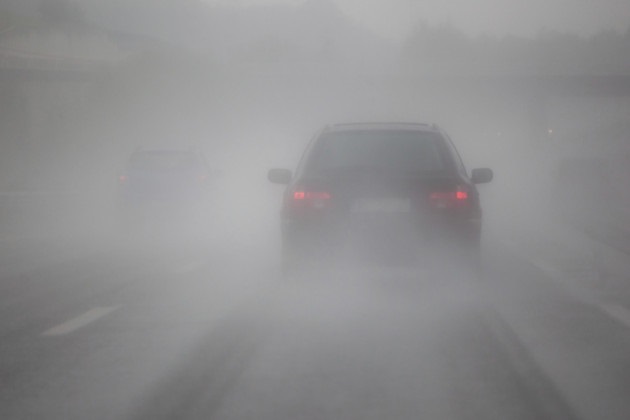
Foggy mornings are much more common as we head into the autumn months
and the reasons are quite simple. The nights are getting longer and
longer which allows the temperatures to fall to the dew point. As the
air cools, it cannot hold as much water vapor so the water vapor
condenses into tiny moisture droplets that stay suspended in the air.
This is what we call "fog"
Dense fog can create dangerous conditions on the road. The safest thing
to do is pull over into a parking area until the fog clears. If you must
continue your trip, keep in mind these tips for driving in fog:
- Minimize distractions. Turn off your cell phone and the stereo.
- Reduce your speed. Because you can't see the road or other vehicles, a low speed can help you react safely.
- Roll down your window to listen for cars.
- Use roadside reflectors as a guide. The markings can help you navigate twists and turns.
- Turn off cruise control for more control of your vehicle.
- Use windshield wipers and defrosters to limit excess moisture on the window.
- Drive with low beams and fog lights. High beams can worsen visibility because they reflect off the fog.
- Use your turn signal. Other drivers may be using your taillights as a guide, so alert them that you're pulling off the road.
- Pull off away from the road. If drivers can't see the shoulder, they likely won’t see your vehicle either.
- Turn on your hazard lights to help other drivers know you're stopped. Avoid using flashing lights while driving.
Information provided by State Farm













0 comments:
Post a Comment